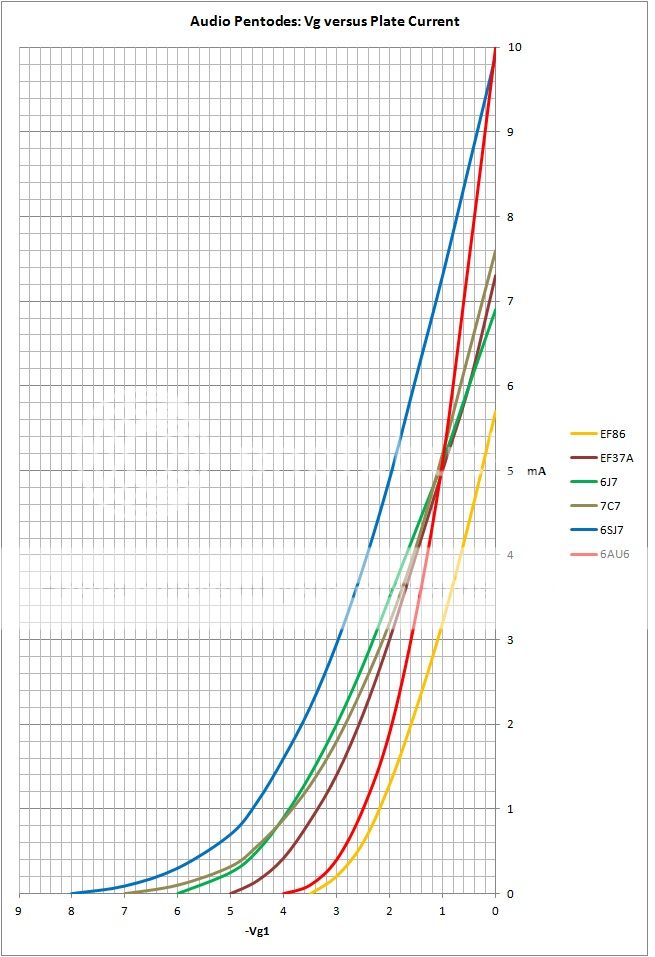I thought I'd share this with the forum as it may be useful to some.
I did some comparisons from the data of various audio pentodes and there are some differences as this chart shows.
The 6AU6 makes the best replacement for an EF86, all other parameters being equal.
All the figures are with both Anode/Plate and Vg2 at 100V.
Best
DaveP

I did some comparisons from the data of various audio pentodes and there are some differences as this chart shows.
The 6AU6 makes the best replacement for an EF86, all other parameters being equal.
All the figures are with both Anode/Plate and Vg2 at 100V.
Best
DaveP




